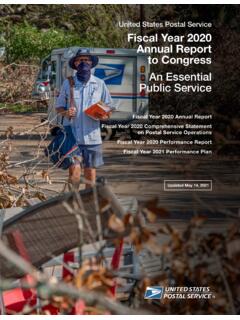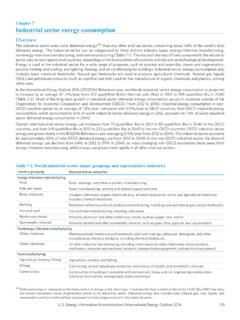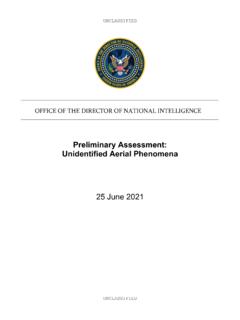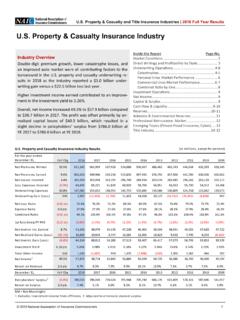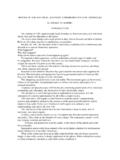Transcription of Closing the Gap Report 2020 - NIAA
1 CL SING THE GAPR eport 2020CL SING THE GAPR eport 2020 OOOCLOSING THE GAPR eport 2020 Closing THE GAPR eport 2020 ContentsPrime Minister s Foreword 3 Closing the Gap 2020 5 Child Mortality 15 Early Childhood Education 23 School Attendance 33 Literacy and Numeracy 45 Year 12 Attainment 57 Employment 65 Life Expectancy 77 References 87 Technical Appendix 932 Closing the Gap Report 2020 Prime Minister s Foreword 3 Prime Minister s ForewordThis year, the Closing the Gap Report marks a new era. An era of partnership based on an historic agreement with Aboriginal and Torres Strait Islander people. Last year, I hoped this Report would be on a new Closing the Gap framework.
2 But, this is not a process we should rush. Getting it right is worth the time it takes. So while we don t yet have a new framework in place, a new process has begun. A process that is truthful, strengths-based, community-led, and that puts Aboriginal and Torres Strait Islander people at the centre. In March 2019, I entered into the Partnership Agreement on Closing the Gap, a landmark agreement to work together to develop the new Closing the Gap framework. It s a commitment by the Commonwealth, all states and territories, the Australian Local Government Association and the Coalition of Aboriginal and Torres Strait Islander Peak Organisations to work together in genuine partnership. This is no small achievement. For the first time, we have constructed something that sits at the very centre of government and demonstrates a strong commitment to Indigenous Australians having a real say.
3 That s what was missing from the original Closing the Gap framework. As we turn the last page on that framework, we take the evidence of the last twelve years and provide the final results. These results are not what we had hoped for, and it s important to acknowledge them. But it s also important to celebrate the stories and successes that lie beyond the targets. On almost every measure, there has been progress. 4 Closing the Gap Report 2020 There have been heartening improvements in key areas of health and education. These are the things that create pathways to better s clear we have more to do, but we must do things differently. Without a true partnership with Aboriginal and Torres Strait Islander people, we will hamper our own new framework is based on true partnership, and on a commitment by all governments to work together, and to work with Aboriginal and Torres Strait Islander people.
4 The new Joint Council on Closing the Gap is developing priorities, realistic targets and metrics that all governments and the Coalition of Peaks can commit to achieving. At the core of this new process is the expertise of Aboriginal and Torres Strait Islander people, guiding local action and local refreshed Closing the Gap will focus on how we deliver services, as well as what is being delivered , and on solutions, not problems. This means changing the way we work. It means expanding the opportunities for shared decision-making and making sure all mainstream agencies provide high quality programs and services. It means making sure Aboriginal and Torres Strait Islander people have better access to high-quality services, including building community-controlled sectors, and ensuring we have the data needed for ongoing improvement.
5 It means making sure we have the systems in place to share responsibility, and to measure our progress. Without this, we can have no meaningful action and no real progress. For example, we are investing in Aboriginal and Torres Strait Islander-led data to support decision-making at a local level. This will mean richer data to build programs that work for people in the place they live. It will also help to develop regional profiles to better understand how we are tracking towards Closing the Gap targets and other community priorities. In making this commitment, together we have made a new path. Together we are setting out towards a goal we all share: that is, for every Aboriginal and Torres Strait Islander child to grow up with at least the same opportunities in life as every other Australian. I look forward to honouring our commitment to partnership.
6 I want to make sure Indigenous Australians are genuinely positioned to make informed choices, forge their own pathways and reach their goals. I want to make sure all governments renew our efforts to help close the gap. We can all play a part. Together we can all improve the lives of Aboriginal and Torres Strait Islander people in this generation and the 5 Closing the Gap 2020 OverviewClosing the Gap began in response to a call for governments to commit to achieving equality for Aboriginal and Torres Strait Islander people in health and life expectancy within a generation. It is the story of a collective journey a shared commitment to empower Aboriginal and Torres Strait Islander people to live healthy and prosperous 2020, there is a greater focus on partnership between governments and Aboriginal and Torres Strait Islander people.
7 At the centre of this new way of working is local action, and a determination to make a difference and to achieve change. This Closing the Gap Report points to the future, a new path where Aboriginal and Torres Strait Islander people share ownership to improve life outcomes for current and future generations. It closes off on an era of reporting against targets set by governments. In partnership with Aboriginal and Torres Strait Islander people, we are moving towards a new National Agreement on Closing the Gap setting out priorities for the next ten Closing the Gap Report 2020 Closing the Gap In 2017, the Government began a process to refresh the Closing the Gap agenda. A Special Gathering of prominent Aboriginal and Torres Strait Islander Australians called for the next phase to deliver a community-led, strengths-based approach.
8 Aboriginal and Torres Strait Islander people are at the centre of this new a formal partnership between government and Aboriginal and Torres Strait Islander people would achieve greater progress in the future, the Prime Minister sought agreement from the Council of Australian Governments (COAG) to a new way of working. In 2019, all levels of government and a Coalition of Aboriginal and Torres Strait Islander Peak Organisations signed a formal agreement to work in genuine partnership. This means shared accountability and jointly developing an agreed framework and new targets. The Partnership is helping to capture the aspirations and priorities of Aboriginal and Torres Strait Islander individuals and communities in the design of policies and programs which impact them. The significance of this new partnership is reflected in the establishment of the Joint Council on Closing the Gap.
9 This is the first time a COAG Ministerial Council has included non-government representatives. As governments work in this new way, there is increasing involvement and support for local communities to set their own priorities and tailor services to their unique contexts. The Indigenous-designed and led Empowered Communities initiative, which is reshaping the relationship between Indigenous communities and governments, is just one example. In a commitment to devolving decision-making as close to the ground as possible, community leaders are directly involved in making recommendations to government about how services and funding align with community priorities. Transparency and data sharing informs a learn and adapt as you go approach and underpins local action. Annual Report on progress in Closing the Gap In 2007, Commonwealth, state, territory and local governments made a commitment to work together to close the gap in Indigenous disadvantage.
10 This led to the National Indigenous Reform Agreement, a significant step toward more coordinated first Closing the Gap framework outlined targets to reduce inequality in Aboriginal and Torres Strait Islander people s life expectancy, children s mortality, education and employment. The commitment focused on delivering policies and programs across fundamental building blocks as priority areas, which would underpin improvement. These were: early childhood, schooling, health, economic participation, healthy homes, safe communities, and governance and 7 The Commonwealth Government has delivered an annual Report on progress on Closing the Gap since the National Indigenous Reform Agreement was established.
